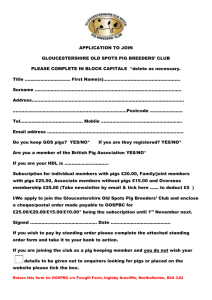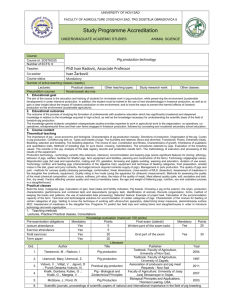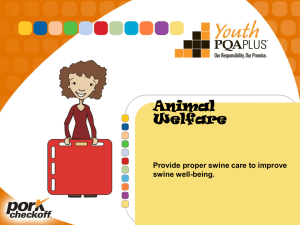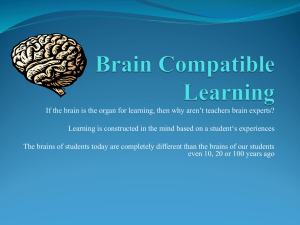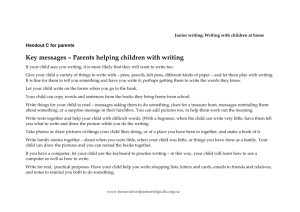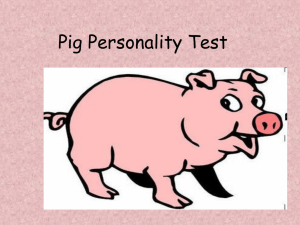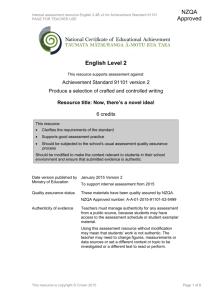1.5 Av3 (Word 2007, 80 KB)
advertisement
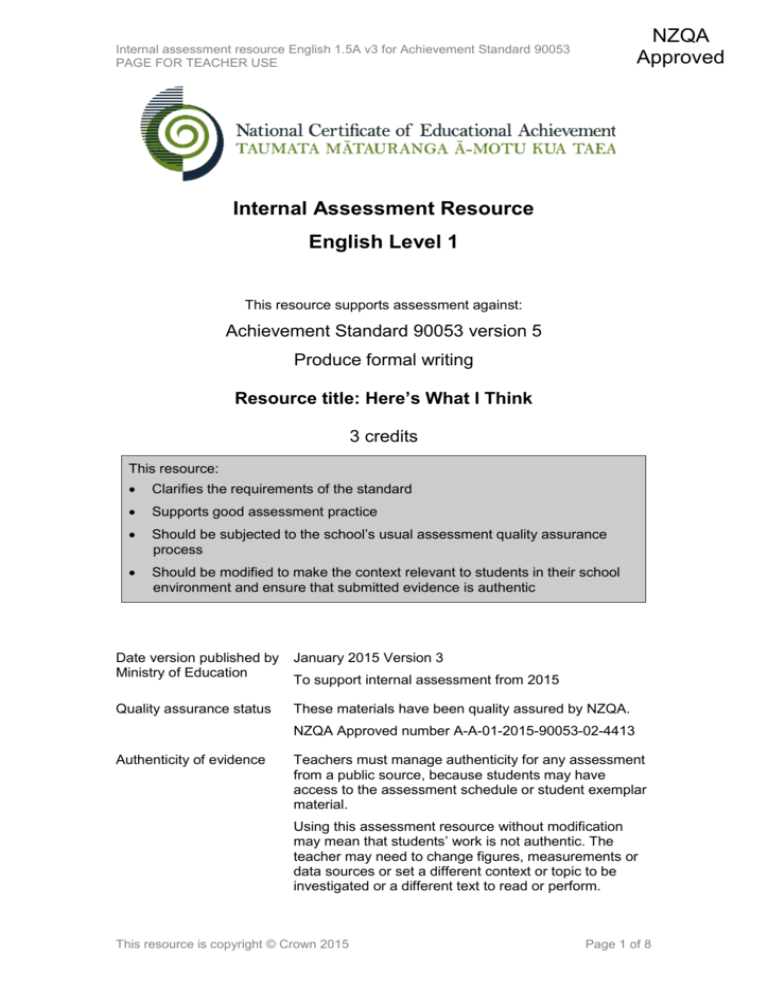
NZQA Approved Internal assessment resource English 1.5A v3 for Achievement Standard 90053 PAGE FOR TEACHER USE Internal Assessment Resource English Level 1 This resource supports assessment against: Achievement Standard 90053 version 5 Produce formal writing Resource title: Here’s What I Think 3 credits This resource: Clarifies the requirements of the standard Supports good assessment practice Should be subjected to the school’s usual assessment quality assurance process Should be modified to make the context relevant to students in their school environment and ensure that submitted evidence is authentic Date version published by Ministry of Education January 2015 Version 3 Quality assurance status These materials have been quality assured by NZQA. To support internal assessment from 2015 NZQA Approved number A-A-01-2015-90053-02-4413 Authenticity of evidence Teachers must manage authenticity for any assessment from a public source, because students may have access to the assessment schedule or student exemplar material. Using this assessment resource without modification may mean that students’ work is not authentic. The teacher may need to change figures, measurements or data sources or set a different context or topic to be investigated or a different text to read or perform. This resource is copyright © Crown 2015 Page 1 of 8 Internal assessment resource English 1.5A v3 for Achievement Standard 90053 PAGE FOR TEACHER USE Internal Assessment Resource Achievement Standard English 90053: Produce formal writing Resource reference: English 1.5A v3 Resource title: Here’s What I Think Credits: 3 Teacher guidelines The following guidelines are supplied to ensure that teachers can carry out valid and consistent assessment using this internal assessment resource. Teachers need to be very familiar with the outcome being assessed by Achievement Standard English 90053. The achievement criteria and the explanatory notes contain information, definitions, and requirements that are crucial when interpreting the standard and assessing students against it. Context/setting This assessment activity requires students to write a formal opinion piece of at least 350 words and to post it on an online school community, such as the school website, the school intranet, or a class wiki. The opinion pieces that students write should use language that is appropriate for the Achievement Standard, that is, formal rather than a tone that is chatty or colloquial. You will find appropriate levels of formality in the “Opinion” section of online newspapers such as the New Zealand Herald, The Dominion Post, The Press, or the Otago Daily Times. Conditions As students develop their drafts, you may offer general guidance, for example, on the need for further work on the ideas, language, or structure, or accuracy in spelling, punctuation, or paragraphing. Assess each student’s work using the online version to preserve formatting and links that the student may have embedded. Resource requirements Computers Access to the Internet Appropriate sites for publication of work – for example, school website, intranet, or class wiki. Additional information The assessment for this standard can be connected to the assessment of other internal standards such as: AS90849 Show understanding of specified aspect(s) of studied written text(s), using supporting evidence; AS90850 Show understanding of specified aspect(s) of studied visual or oral text(s), using supporting evidence; This resource is copyright © Crown 2015 Page 2 of 8 Internal assessment resource English 1.5A v3 for Achievement Standard 90053 PAGE FOR TEACHER USE AS90852 Explain significant connection(s) across texts, using supporting evidence; and AS90853 Use information literacy skills to form conclusion(s). Wherever such integration between different parts of the programme occurs, ensure that the work presented for each assessment is developed sufficiently in order to meet the criteria for each standard. Refer closely to each relevant standard, including the Explanatory Notes and the Conditions of Assessment Guidelines. This resource is copyright © Crown 2015 Page 3 of 8 Internal assessment resource English 1.5A v3 for Achievement Standard 90053 PAGE FOR STUDENT USE Internal Assessment Resource Achievement Standard English 90053: Produce formal writing Resource reference: English 1.5A v3 Resource title: Here’s What I Think Credits: 3 Achievement Achievement with Merit Achievement with Excellence Develop and structure ideas in formal writing. Develop and structure ideas convincingly in formal writing. Develop and structure ideas effectively in formal writing. Use language features appropriate to audience and purpose in formal writing. Use language features appropriate to audience and purpose with control in formal writing. Use language features appropriate to audience and purpose with control to command attention in formal writing. Student instructions Introduction This assessment activity requires you to write a formal opinion piece of at least 350 words and to post it on an online school community, such as your school website, the school intranet, or a class wiki. Your opinion piece may concern a school-related issue or an issue in the wider community. The issue will be negotiated with your teacher. Your audience will be other students, staff, and the wider community. You will write your opinion piece at school under supervised conditions. You will be assessed on how effectively you develop and structure your ideas and your use of language features that are appropriate for the audience and purpose. Preparatory task As a class, or in groups, brainstorm possible issues. Note aspects to be considered, different points of view, and arguments that readers might offer in response to reading your opinion piece. Choose an issue to write about. Your choice will need to be approved by your teacher to ensure that it is suitable and that you have the opportunity to achieve at the highest level. Think about your issue and write your plan, including: your personal viewpoint on the issue three or four points in support of your viewpoint the order in which you will make these points in your opinion piece. Research supporting evidence for your opinion. Sources for information include the library, surveys or interviews (for example, with your teacher, principal, or members of your family or whānau), or an Internet search. Record useful information, including all sources. This resource is copyright © Crown 2015 Page 4 of 8 Internal assessment resource English 1.5A v3 for Achievement Standard 90053 PAGE FOR STUDENT USE Task Write your opinion piece. As you write, aim for: an attention-grabbing headline – this is what will make people click on your link to read your opinion piece a strong opening – this will command your readers’ attention from the start. Imagine your reader is asking “Why should I care?” a clearly stated opinion – this will make it easy for readers to understand your point of view short paragraphs – breaking up your text will make it easier to read on screen. Consider using subheadings, links, and/or keywords. As you develop your opinion piece, add details or examples for each new point or idea in your plan and link that idea to other ideas and details. Use language features appropriate to your audience and purpose. Edit and proof your work. See Resource A. Publish your opinion piece on an appropriate site. Before doing so, check with your teacher that it is appropriate for a public forum. This resource is copyright © Crown 2015 Page 5 of 8 Internal assessment resource English 1.5A v3 for Achievement Standard 90053 PAGE FOR STUDENT USE Resource A: Editing and proofing Editing means that you read your work and make improvements to the tone and style of the piece. For example, you might: strengthen your opening to command attention replace informal words or phrases with words more appropriate for formal writing improve the flow of your sentences vary the way your sentences start improve the links between ideas add links, sub-headings, or keywords add more supporting evidence add explanations to link your evidence to your ideas. Proofing means that you should check your work carefully for errors. Here is a list of some common errors in students’ writing: missing punctuation (for example, full stops, commas, apostrophes, speech marks) missing or misused capital letters incomplete or incorrect sentences incorrect paragraphing misspelt words mixed-up tenses incorrect use of conventions of online writing. This resource is copyright © Crown 2015 Page 6 of 8 Internal assessment resource English 1.5A v3 for Achievement Standard 90053 PAGE FOR TEACHER USE Assessment schedule: English 90053 Here’s What I Think Evidence/Judgements for Achievement Evidence/Judgements for Achievement with Merit Evidence/Judgements for Achievement with Excellence Students present a formal piece of writing, of at least 350 words, that develops and structures ideas using language features appropriate to audience and purpose by: introducing the topic, the writer’s position, and developing relevant ideas such as: facts, information, opinions, observations, arguments building on an idea by adding details or examples, such as quotations, information, personal viewpoint, observation linking and organising idea/s to other ideas and details, and working towards a coherent planned whole using language features appropriate to audience, purpose and selected text type, such as: vocabulary selection, syntax, stylistic features, and written text conventions (including spelling, punctuation, and grammar). using written text conventions without intrusive error patterns, such as a pattern of errors in syntax (e.g. sentence fragments, where structures are not used intentionally; and ‘run on’ syntax) or a pattern of other significant errors (e.g. mixed tense sequences, miscapitalisation, spelling errors). Students present a formal piece of writing, of at least 350 words, that develops and structures ideas convincingly using language features appropriate to audience and purpose with control by: introducing the topic, the writer’s position, and developing relevant ideas such as: facts, information, opinions, observations, arguments structuring and building on the ideas so they are generally credible and connected selecting and linking language features and presentation techniques as appropriate to the intended audience and purpose for the selected text type using written text conventions accurately so that the writing contains only minor errors. Students present a formal piece of writing, of at least 350 words, that develops and structures ideas effectively using language features appropriate to audience and purpose to command attention by: introducing the topic, the writer’s position, and developing relevant ideas such as: facts, information, opinions, observations, arguments structuring and building on the ideas so they are compelling and well-organised selecting, linking and sustaining language features and presentation techniques in an original manner, or in a distinctive personal voice, dimension or viewpoint as appropriate to their audience and purpose for the selected text type using text conventions accurately so that the writing contains only minor errors. NB: The example below is one student’s opinion on a type of pig farming. The ideas in this editorial on pig farming are sufficiently developed and structured with supporting evidence to clearly establish the This resource is copyright © Crown 2015 NB: The example below is one student’s opinion on a type of pig farming. In this version of the same editorial on pig farming the ideas are sufficiently developed and structured with supporting detail to make the piece convincing. Language is controlled, and the quotations are well selected and integrated. For example: I discovered on www.lovepigs.org that they spend their lives in cramped metal pens inside filthy, disgusting sheds. They are given almost no room to move and they are deprived of everything that is natural to them. Some pens in New Zealand are NB: The example below is one student’s opinion on a type of pig farming. In this version of the same editorial on pig farming the ideas with the additional comments and details help make the message compelling and very effective. The language commands attention: ‘about turn’, ‘awareness and education’, ‘key to changing’, ‘plight’ etc. demonstrate a succinct, personal, but well controlled voice. For example: I discovered on www.lovepigs.org that they spend Page 7 of 8 Internal assessment resource English 1.5A v3 for Achievement Standard 90053 PAGE FOR TEACHER USE writer’s purpose and language features have been selected and used appropriately. For example: I discovered on www.lovepigs.org that they spend their lives in cramped metal pens inside filthy, disgusting sheds. They are given almost no room to move and they are deprived of everything that is natural to them. Some pens in New Zealand are only 60cm wide and 2m long and the pigs can’t turn around. Their living conditions are horrible; imagine sleeping in your own urine and faeces. only 60cm wide and 2m long and the pigs can’t turn around. Their living conditions are horrible; imagine sleeping in your own urine and faeces. On 20/20 a television programme Mike King describes the pigs he saw as “unable to move… screaming and frothing at the mouth”. After finding out the reality of a farmed pig’s life, Mike King joined the campaign to make this practice illegal. their lives in cramped metal pens inside filthy, disgusting sheds. They are given almost no room to move and they are deprived of everything that is natural to them. Some pens in New Zealand are only 60cm wide and 2m long and the pigs can’t turn around. Their living conditions are horrible; imagine sleeping in your own urine and faeces. On 20/20 a television programme Mike King describes the pigs he saw as “unable to move … screaming and frothing at the mouth”. After finding out the reality of a farmed pig’s life, Mike King joined the campaign to make this practice illegal. This is an about turn for this popular NZ comedian who was the face of the NZ pork advertisements until only recently. He stated that he had “no idea what was really happening.” I think this shows that a greater awareness and education is the key to changing the plight of the farmed pig. Final grades will be decided using professional judgement based on a holistic examination of the evidence provided against the criteria in the Achievement Standard This resource is copyright © Crown 2015 Page 8 of 8


